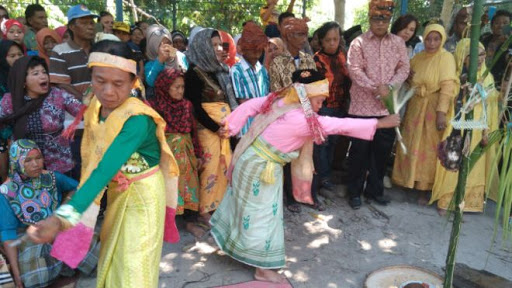This study aims to explore further the understanding of ethnic Kaili on human resources development. The core of the problem to be solved in this study is how Kaili ethnic group in Palu City constructs human resource development and various elements related to efforts to increase the competitiveness of human resources. An important part of this study is the cultural values of the Kaili ethnic group. This study raises the view of the Kaili ethnic group on the basis of human resources, among others, based on literature review, that there is very limited written information about this ethnicity. Notes on Kaili written by strangers, found in the writings of Kruyt (1898), and Collins (2006). Kruyt stopped by in Palu while traveling from Poso to Lindu, the result of his trip was a book entitled “Van Poso Naar Parigi Sigi En Lindue”. As for Collins, in the book “The History of the Malay Language of Central Sulawesi 1793-1795”, as a language scholar, he never did research in Palu. Collins’ work shows that Kaili’s existence in Palu has been around for centuries, and has a relationship with the outside world through trade with several immigrants who trade through the Donggala port.
The literature used in this research is an elaboration of theory of Human Resource Development (PSDM) and the theory of social science, to be precise sociology. Dreher (2016: 54) argues that investigations into the ‘sui generis reality ‘ of society require tracing by revealing where this reality was built. Stewart & Sambrook (2012: 17) also stated that human resource development needs to include a more interpretivist / social constructionist perspective, and increase the focus on critical approaches in academia. The theory of sociology is a social construction proposed by Berger (1991), who sees that in understanding society there is a fundamental dialectical process of society which consists of three momentum, or
steps externalization, objectivation, and internalization. Externalization is an outpouring of human selfhood continuously into the world, both in physical and mental activities.
Objectivation is the bearing of the products of activity (both physical and mental), a reality that confronts its original producers, in the form of a fact (facticity) external to, and other than, the producers themselves. Internalization is the re-permeation of this reality by humans, and transforming once again from the structures of the objective world into the structures of subjective consciousness. Through externalization, society is a human product. Through objectivation, society becomes a sui generis reality, unique. Through internalization, humans are a product of society. With a dialectical model in which there are thesis, anti-thesis, and synthesis, Berger sees society as a human product and humans are a product of society. All social realities have an essential component of consciousness. Social consciousness builds human knowledge.
The method used to answer research problems is qualitative research. The research location was the city of Palu, the capital of Central Sulawesi. By focusing on the Kaili ethnic human resources related to the formal education achieved. Based on these criteria, two research subjects were selected, subjects who can continue formal education to the highest education categorized as role models, and subjects who cannot continue their education for various reasons and conditions, subjects who drop out of school are conceptualized as “patah pinsil (broken pencils, lit)”, according to local community constructions. Based on the social construction approach of Peter Berger and Thomas Luckmann, the results of the study can be concluded as follows: The supporting and inhibiting components of Kaili’s ethnic human resources competitiveness in Palu City are related to natural, religious, cultural, economic and political factors. For the subject of role models, to increase the competitiveness of human resources, it is related to the basic principle that the Kaili people must be natau (smart or clever), Nabia (brave or have determination), feel Naeya(embarrassed) if they do not improve education. Another principle, they must be able to carry out activities properly as shown by the concept of belo rapovia belo rakava (if you do good, goodness will also be received), and majadi tau (being a human), because the principle of belo rapovia belo rakava and majadi tau will make you a useful human. Meanwhile, according to the “broken pencils” subjects, they have the opposite principle, they naase nomore (enjoy the fun) so that it hinders education improvement as an effort to strengthen the competitiveness of human resources. From the results of these studies, novelty which is shown by this research is that through the contribution of social science approach, they can acquire information based on social knowledge related to human resource development theory which requires the input of information based on social knowledge. They can be materials to be managed in the process of developing human resources.
Author: Dr. Indah Ahdiah, S.Sos, M.Si., Prof. Dr. Ida Bagus Wirawan, Drs., SU., Prof. Dr. Bagong Suyanto, Drs. M. Si
Journal link related to the article above: https://produccioncientificaluz.org/index.php/opcion/article/view/24591





